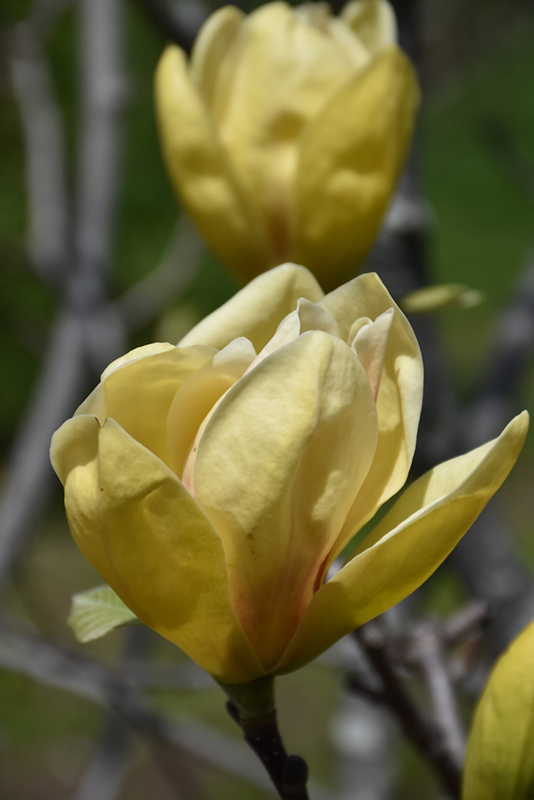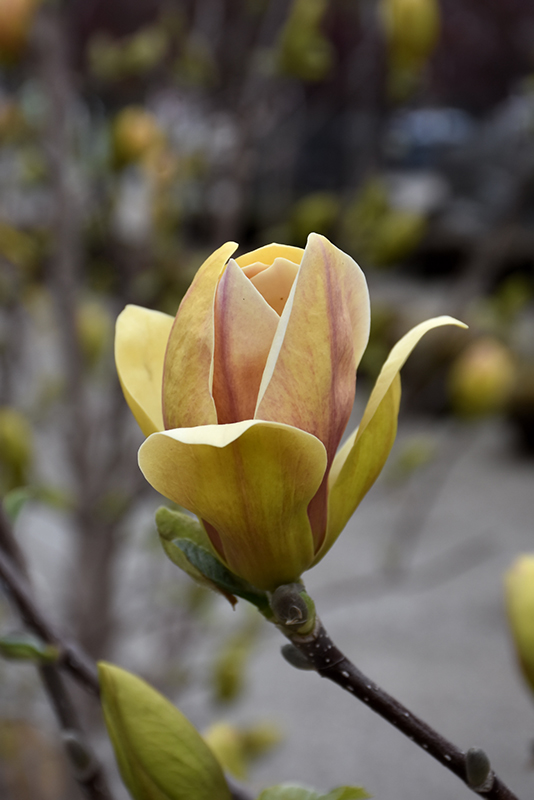Height: 25 feet Spread: 10 feet
Sunlight:
Hardiness Zone: 4b Description: An exquisitely beautiful magnolia with yellow blooms that are striped with pink; a small tree or large shrub with a tidy form and large relatively coarse leaves; flowers appear late, just as foliage emerges. Needs protection from strong winds. Ornamental Features Magnolia, Sunsation is covered in stunning fragrant yellow cup-shaped flowers with purple eyes and pink stripes held atop the branches in mid spring before the leaves. It has dark green deciduous foliage. The large pointy leaves turn coppery-bronze in fall. Landscape Attributes Magnolia, Sunsation is a deciduous tree with a distinctive and refined pyramidal form. Its relatively coarse texture can be used to stand it apart from other landscape plants with finer foliage. This is a relatively low maintenance tree, and should only be pruned after flowering to avoid removing any of the current season's flowers. Deer don't particularly care for this plant and will usually leave it alone in favor of tastier treats. It has no significant negative characteristics. Magnolia, Sunsation is recommended for the following landscape applications; Planting & Growing Magnolia, Sunsation will grow to be about 25 feet tall at maturity, with a spread of 10 feet. It has a high canopy with a typical clearance of 7 feet from the ground, and is suitable for planting under power lines. As it matures, the lower branches of this tree can be strategically removed to create a high enough canopy to support unobstructed human traffic underneath. It grows at a medium rate, and under ideal conditions can be expected to live for 50 years or more. This tree does best in full sun to partial shade. It does best in average to evenly moist conditions, but will not tolerate standing water. This plant should be periodically fertilized throughout the active growing season with a specially-formulated acidic fertilizer. It is not particular as to soil type, but has a definite preference for acidic soils. It is quite intolerant of urban pollution, therefore inner city or urban streetside plantings are best avoided. Consider applying a thick mulch around the root zone in winter to protect it in exposed locations or colder microclimates. This particular variety is an interspecific hybrid. Special Attributes Magnolias are not toxic plants. They are also Deer Resistant to being eaten, but some deer like to use them as a back scratchers.![]()
![]()
![]()
![]()
![]()
![]()
![]()
![]()
![]()
![]()
![]()
![]()


